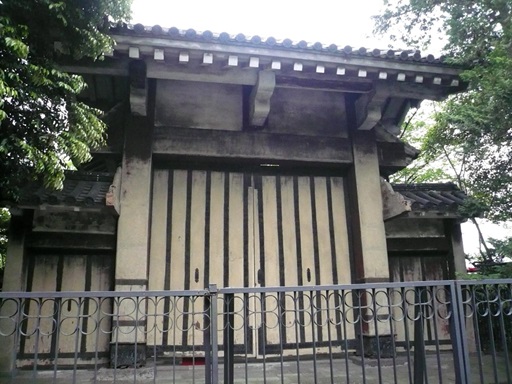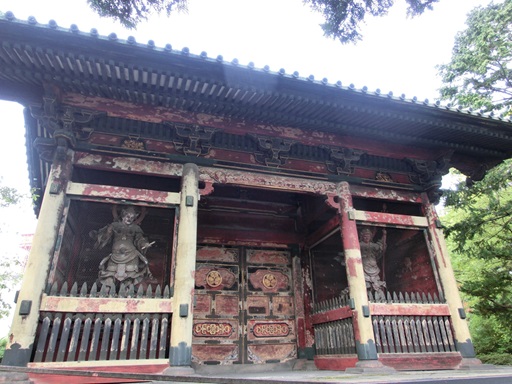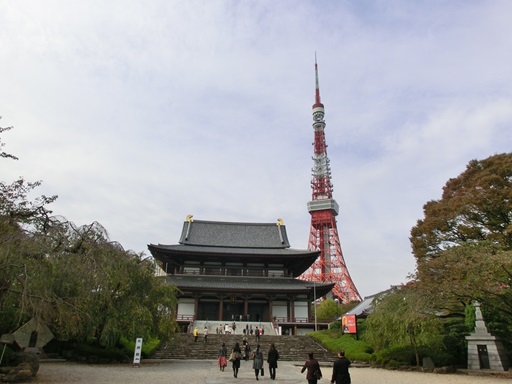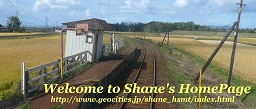|
Zoujyoji Temple
|
Zoujyoji Temple is located in Shiba Area, Tokyo. It was founded in 1393.
Zoujyoji Temple belongs to Jodo-Buddhism, derived from Pure Land Buddhism, by Monk HONEN (1133 - 1212).
In 1470, Joujyoji Temple was certified to be the temple for the imperial family to pray.
After TOKUGAWA Ieyasu
(1543 - 1616)
opened the Edo shogunate and became the first Shogun in the Edo Age
(1603 - 1868)
in 1603, Zoujyoji Temple became the family temple of TOKUGAWA Shogunate.
If you get off Toei Mita Line at Onarimon, Zoujyoji Tempe is located to the south of Onarimon Station.
"Onarimon" Gate is located at the north end of Zoujyoji Temple.
"Onari" means "go" in English, with respects for a man of high standing. When TOKUGAWA Shogun visited Zoujyoji Temple, they went through "Onarimon" Gate.
If you walk down to South from "Onarimon" Gate, you will see "Nitenmon" Gate of former "Yushoin" Mausoleum.
|
"Onarimon" Gate

|
"Nitenmon" Gate

|
|
These two gates are original gates from the Edo Age.
"Onarimon" Gate was built in 1716.
If you walk further to the south, you will see "Sangedatsu-Mon" gate.
Two storied "Sangedatsu-Mon" gate is the main gate of Zoujyoji Temple and is very huge.
"Sangedatsu" means to emancipate oneself from the three passions.
"Sangedatsu-Mon" gate was originally built in 1611. The current gate was rebuilt in 1622, after the original "Sangedatsu-Mon" was destroyed by strong wind. It is designated as an important property of Japan.
To the south of "Sangedatsu-Mon" gate, "Kuromon" Gate is located. "Kuromon" Gate was built between 1648 and 1652. It was donated by TOKUGAWA Iemitsu
(1604 - 1651)
, the third Shogun in the Edo Age.
"Kuromon" gate was built in the early seventeenth century. The gate was covered by black Japanese lacquer. Japanese lacquer was very expensive in the Edo Age and practically it was allowed only for TOKUGAWA Shogunate and feudal lords. Kurumon Gate covered by Japanese lacquer represents Zoujyoji Temple was protected and supported by TOKUGAWA Shogunate.
If you walk straight from "Sangedatsu-Mon" to the west, you will see the main hall of Zoujyoji Temple.
Behind the main hall, you will see Tokyo Tower. The combination of the main hall of Zoujyoji temple and Tokyo Tower is very impressive.
The main hall was destroyed during World War II. It was rebuilt in 1974.
At the north-west corner of Zoujyoji Temple, the mausoleum of TOKUGAWA Shogunate is located. On the way to the mausoleum from the main hall, you will see the bell-tower. originally, it was built in 1633 and rebuilt after Word War II. The great temple bell at Zoujyoji Temple announced the time twice a day in the Edo Age. The great temple bell was well-known for the good sound.
In front the mausoleum, "Inukimon" Gate is located. It was the middle gate for the mausoleum of TOKUGAWA Ienobu
(1662 - 1712)
, the sixth Shogun in the Edo Age.
In the mausoleum, the graves of the second, the sixth, the seventh, the twelveth and the fourteenth Shogun are located.
In the Edo Age, each grave were located in the each mausoleum. It means there were many mausoleums, total ninety-six mausoleums in Zoujyoji Temple. There mausoleums were located at the both sides (north and south) of the main hall of Zoujyoji Temple. Unfortunately, these mausoleums were destroyed at the World War II.
The below picture shows the grave of TOKUGAWA Hidetada
(1579 - 1632)
, the second Shogun in the Edo Age.
"Ogo", Sugenin,
(1573 - 1626)
, the wife of TOKUGAWA Hidetada, was also buried in the grave.
The below picture shows the grave of TOKUGAWA Ienobu, the sixth Shogun in the Edo Age
The below picture shows the grave of TOKUGAWA Ietaugu
(1709 - 1716)
, the seventh Shogun in the Edo Age.
TOKUGAWA Ietaugu was the youngest Shogun and died at the youngest age in the Edo Age.
The below left picture shows the grave of TOKUGAWA Iemochi
(1846 - 1866)
, the fourteenth Shogun in the Edo Age. Before he became in the Shogun Position, Commodore Matthew PERRY came to Japan 1853, in order to open Japan from the United States of America. Arrival of Commodore Matthew Perry generated big arguments in Japan, to open the country or to reject the requests of Commodore PERRY. It was when he was in the Shogun position, and it was very difficult time in Japan. Edo Bakufu was in the position to open the country, but Imperial Court in Kyoto tried to keep Japan closed. As these arguments divided Japan, the marriage of TOKUGAWA Iemochi and Princess Kazu
(1846 - 1877)
, the daughter of Emperor Ninkou
(1800 - 1846)
was planed. Although Princess Kazu had her fiance, but they were forced to marriage in 1861.
|
|
The above-right picture shows the grave of Princess Kazu.
TOKUGAWA Iemochi and Princess Kazu were a friendly couple. Five years after the marriage, TOKUGAWA Iemochi died. After the death of TOKUGAWA Iemochi, Princess Kazu did not return to Imperial court in Kyoto and lived in the Edo Castle as a member of TOKUGAWA Shogunate.
There is the other mausoleum of TOKUGAWA Shogunate in Kaneiji Temple, Ueno Tokyo.
TOKUGAWA mausoleum in Zoujyoji Temple is very impressive. It is open for the public from 11:00AM to 3:00PM on week days and 10:00AM to 4:00PM on weekends.
|
|
|
How to get there
Onarimon Station on the Toei Mita Line is the nearest station for Zoujyoji temple.
You are also able to walk to Zoujyoji Temple from Hamamatsucho Station on the Keihin-Tohoku Line.
It will take you approximately fifteen minuets on foot.
Official English Website:
https://www.zojoji.or.jp/en/
Other Historical Sites near by:
Edo Castle
Kaneiji Temple
Hibiya Park
"Hama-Rikyu" Garden
"Shiba-Rikyu" Garden
Sengakuji Temple
|
|

 Home Page in Japanese: "Shane's HomePage"
Home Page in Japanese: "Shane's HomePage"

 Home Page in Japanese: "Shane's HomePage"
Home Page in Japanese: "Shane's HomePage"